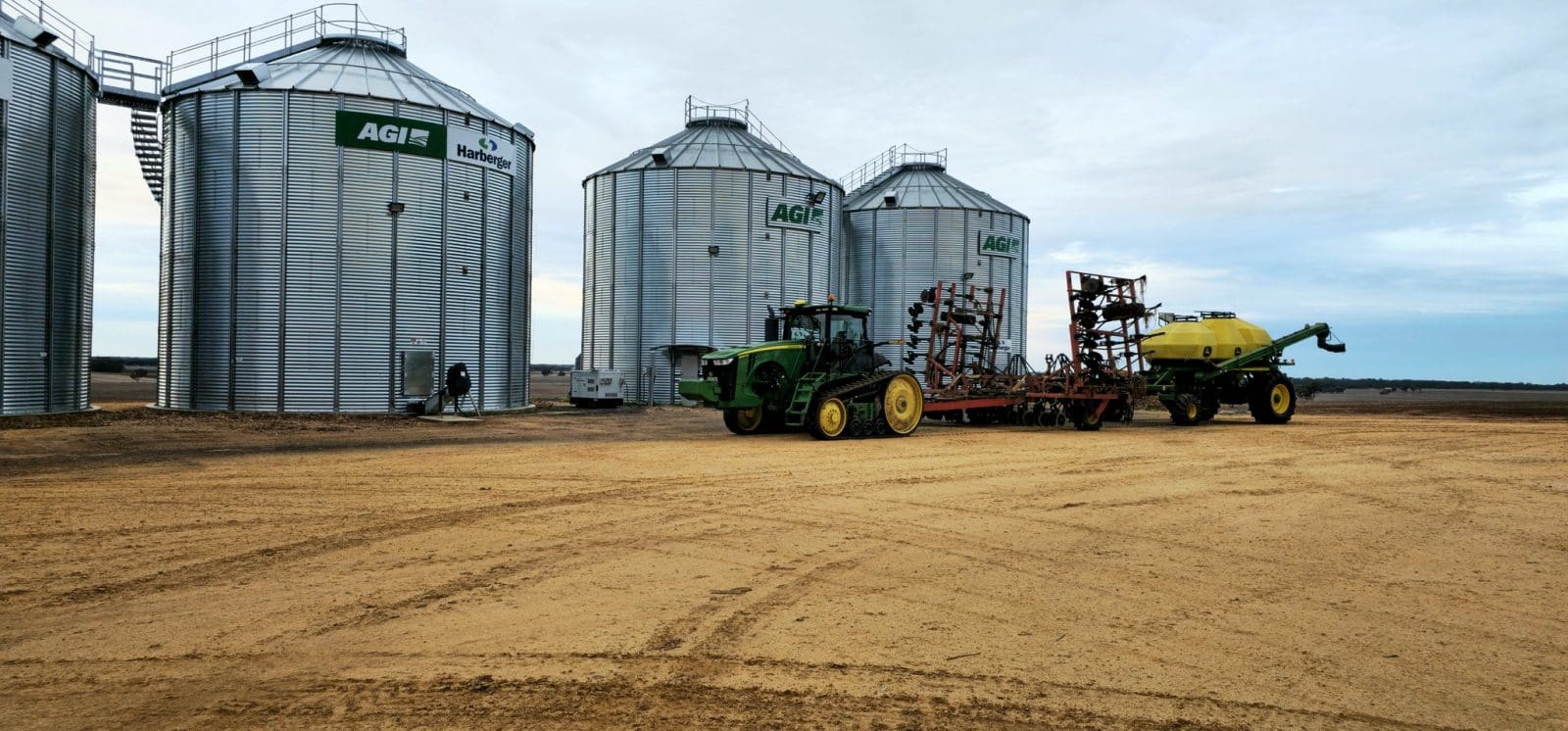
Sowing finished this week at the Giles family’s Nerrina Farms in Victoria’s southern Mallee. Photo: Tim Giles
A FLURRY of grower selling and correcting global markets have seen prices for wheat and barley ease in the past week to end the rally seen throughout May.
Sorghum and ASW wheat on the Downs have both lost $10 per tonne over the week, but Downs barley and southern wheat have dropped a couple of dollars at most.
ABARES on Tuesday released its quarterly figures, which put the national wheat crop at 29.1Mt and barley at 11.5Mt.
Given the fragile nature of the start to the growing season for many crops in Western Australia, western Victoria and South Australia, the numbers were bigger than many were expecting, which has added to bearish sentiment this week.
| Today | May 30 | |
| Barley Downs | $420 | $420 |
| ASW wheat Downs | $415 | $425 |
| Sorghum Downs | $350 | $360 |
| Barley Melbourne | $368 | $375 |
| ASW wheat Melbourne | $388 | $390 |
Table 1: Indicative prices in Australian dollars per tonne.
Northern market slow
Southern Queensland and northern New South Wales continue to enjoy an ideal start to the season, and many growers have finished planting.
Barley has become very hard to find on farms north of central NSW, and feedlots are now turning attention to pricing some early new crop.
For January plus carry, new-crop ASW wheat has traded at $390/t delivered Downs, and barley has been booked at $378/t.
“New-crop values have come off quite strongly.
“There’s old-crop stuff coming to market, and there’ll be plenty of new-crop stuff.”
Cottonseed is seen by feedlots as too expensive to feed at maximum inclusion to cattle, but is not cheap enough to buy itself any volume export demand to China and South Korea.
It is currently priced at around $540-$545 delivered Downs, and one feedlotter said it would have to be $480-$490/t to buy itself some extra local demand.
“If it’s cheap, it might be at 8 percent in rations; now it’s back to about 4-5pc.”
Canola meal at around $620-$630/t delivered Downs is the preferred protein option at well below the $800/t or so for soymeal.
“There are still a few shorts in the market because ginning’s slow; we might be around 85-90pc picked, but 20pc ginned; it’s slow.”
Woodside Commodities managing director Hamish Steele-Park estimates ginning could be 25pc done overall.
“Picking is nearing completion in the north , but there’s a little way to go in the Riverina,” Mr Steele-Park said.
“Cottonseed seed values somewhat range bound at the moment; domestic demand is subdued, and while some export demand it under current ex gin values.”
Cottonseed ex Moree gin is trading at around $500/t, and $15/t less ex Namoi Valley.
The tail end of southern Qld’s sorghum harvest is pushing moderate amounts of grain into the export market, and prices on rain-affected grades are cheap enough to be buying them plenty of demand from the poultry and pork sectors, and some feedlots too.
Volume shifts in south
Electronic trading platform Clear Grain Exchange (CGX) said Australian grain markets were active throughout May as end-users, domestic traders and exporters looked to increase their levels of coverage as international prices moved higher.
Throughout May, CGX saw 85 buyers purchase 683,000t of grain, with a record 59 buyers purchasing grain in the second week of May alone.
“Prices increased across the broad as buyers pushed their bids higher to match seller offers and secure the grain they required,” CGX general manager Trent Smoker said.
Lifts over May seen on CGX reflected a firming in international values, with Australia’s benchmark APW1 wheat prices up $30-$45/t across the country, and trading at a considerable premium in Western Australia over south-eastern Australia..
While the Melbourne port equivalent traded at a May high of $386/t, WA’s Kwinana port zone touched a high of $430/t.
CGX trades indicate the east-west spread on barley was not so pronounced, with Melbourne up $20-$35/t over the month to a port-equivalent high of $353/t, while Kwinana rose to $365/t.
Wilken Grain trader Andrew Kelso said the softer US markets, as well as the big ABARES numbers, and local grower selling have made for a more bearish market this week.
“Growers have sold a lot over the past couple of weeks,” Mr Kelso said.
With many growers in Vic and SA needing more rain soon to consolidate prospects for germinating or recently germinated crops, Mr Kelso said growers are not keen to forward sell.
“The NSW farmer might be doing that because he’s had more rain.”
Mr Kelso said concerns that Russia’s crop may have more downside could well push world markets back into bullish territory
“The Russian crop was seen at around 90 million tonnes, and now it’s in the low 80s”
Frost may have done more damage to the Russian crop than can be known ahead of its harvest starting.
“If they cut Russia by another 5Mt, the market will react.”
This is despite US wheat crop conditions consolidating, and Europe being too wet in parts, and too dry in others.
Grain Central: Get our free news straight to your inbox – Click here


HAVE YOUR SAY